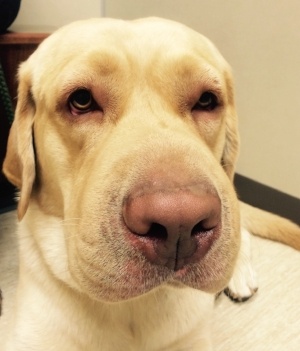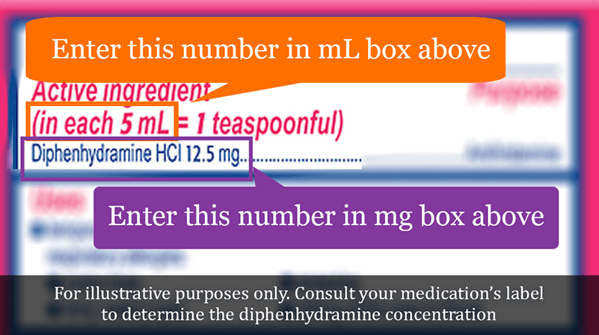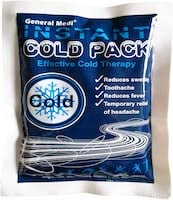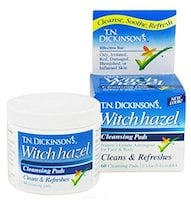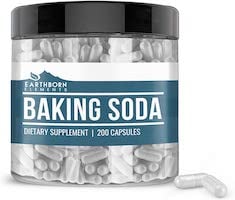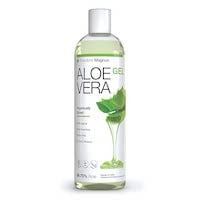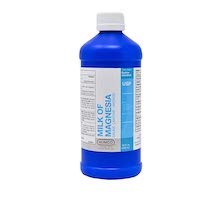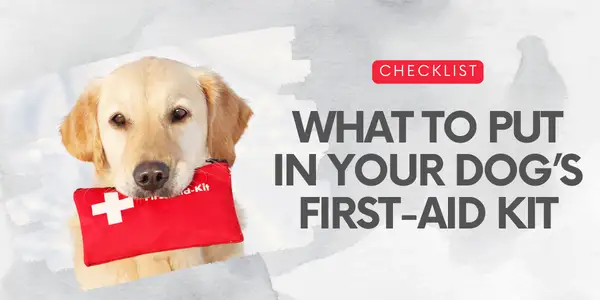Other Uses of Benadryl for Dogs
Diphenhydramine is often given to dogs for other reasons besides bee stings. Before giving Benadryl to your dog, make sure you have discussed its use with your veterinarian.
For some dogs, but not all, Benadryl has been found to help lessen the effects of seasonal allergies and itching. The calculated dose can be given every 8 to 12 hours.
Since Benadryl can make some dogs sleepy, pet owners have found giving the calculated dose about 1 to 2 hours before traveling helpful if their dog has travel anxiety.
Use caution, especially if you have never given Benadryl prior, as it can make some dogs hyper.
No Longer Used for Snake Bites
For years, Benadryl was recommended to give to dogs that were bitten by snakes. This is no longer the recommendation due to the fact that some contraindications have been found.
It is often only used as a pre-treatment if the dog is getting antivenom to help prevent a reaction to the antivenom.
WARNINGS WHEN GIVING YOUR PET BENADRYL
- Make sure your medication ONLY has diphenhydramine as an active ingredient! Don't use any additional pain relievers, decongestants, or other drug types.
So no Benadryl® Cold and Flu, Benadryl® Cold and Allergy, Tylenol® PM, Advil® PM, or any other combination medications containing diphenhydramine – just straight up diphenhydramine.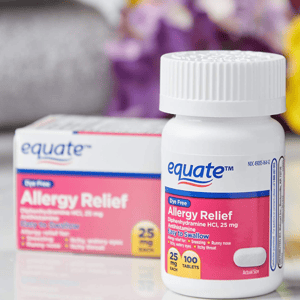
- Double-check that there is no alcohol listed in the active ingredients of the diphenhydramine you're using for your pet.
- Make sure that the formulation of diphenhydramine you get for your dog does NOT contain xylitol, a common sweetener that is fine for people but highly toxic to dogs!
- If your pet is overweight or obese (be honest), calculate their dose based on what their ideal/target "lean" body weight should be.
- Benadryl overdosing can cause pets to suffer agitation, sedation, vomiting, heart abnormalities, and other problems. So please be sure to double (and triple) check your doses before giving your pet this medication.
- Monitor your pet's swelling. If it is no better within an hour or gets worse at any point, you should take them to a veterinarian immediately for evaluation and further treatment.
Similarly, if the swelling is present on their face or neck, or if they are having any difficulties breathing, they should be brought immediately to the vet.
Remove the Stinger
Here is a video and tips for stinger removal. If you don't feel comfortable doing this yourself, take your dog to a veterinary clinic.
- Scrape a credit card over the skin and in the direction of the fur at the site of the sting to gently remove the stinger. Once removed, flick off the stinger into the trash.
- Wash the area with warm water and a mild soap following the removal of the stinger.
- Apply a soothing paste of baking soda. Use a 3:1 mixture; three parts baking soda to one part water.
You do NOT want to use tweezers unless it is necessary. Tweezers can potentially force more venom from the stinger.
Monitor the Area
If the swelling around the sting site is not responding to diphenhydramine or the at-home treatments described further below, you should see your veterinarian.
Some dogs have more severe reactions to bee or wasp stings than others and will need more immediate veterinary care.
Prevent Your Dog from Chewing, Licking, or Scratching at the Sting
It may be necessary to put an Elizabethan collar and/or socks on your dog’s paws to help control trauma to the skin from chewing and scratching. Continual trauma or irritation to the affected skin can delay the sting from healing and cause an infection.
And remember, if your pet’s swelling is widespread (especially around the face and/or neck), the itchiness is intense, or there are any digestive disorders, breathing problems, or collapse — your pet needs to be seen immediately by a vet for evaluation and treatment.
What If You Don't Have Benadryl or Your Dog is Allergic to it?
If your pet does get a bee sting that just causes mild itchiness or swelling around only the site of the sting (that’s not present on or around their face), and your pet isn't too uncomfortable with it, you may have success treating them at home with one of the following at-home bee sting treatments.
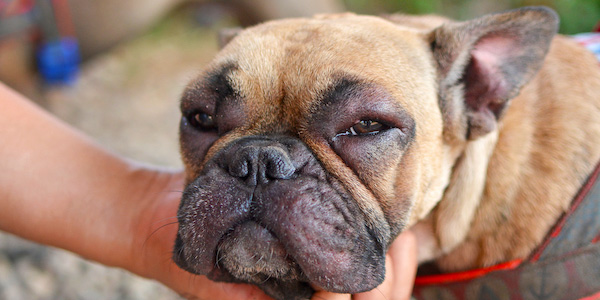
7 Drug-Free At-Home Treatments for Bee Stings
These treatments can be used on dogs or cats who have been stung by bees, wasps, or hornets:
Ice Pack
Once you identify the sting area, you should apply an ice pack over the swelling area. Wrap the ice pack in a washcloth to prevent direct skin contact, as direct, prolonged skin contact with ice can cause damage.
Apply the ice pack for ten minutes, followed by ten minutes without. Repeat this for the first hour or two. A bag of frozen peas or vegetables works well if you don’t have ice available.
If there are several stings or bites to the body, soaking a towel in very cold water and applying it helps.
Apple Cider Vinegar
You can apply the vinegar to a cotton ball, cotton pad, or cotton swab and hold it directly on the stung area. Apple cider vinegar can often neutralize the venom from a bee sting.
Do this several times until the swelling subsides. Take care not to get any near your dog’s eyes.
Witch Hazel
You can apply witch hazel several times per day with a cotton swab or cotton ball to clean the area and help with irritation. Witch hazel provides the benefit of reducing inflammation and itchiness. Take care not to get any near your pet’s eyes.
Baking Soda Paste
You can easily make a paste of baking soda and water (3:1 — three parts soda to one part water). You can also use baking soda capsules to make small amounts of paste.
Simply apply the paste to the sting area once every two hours for the first day until the swelling goes back down.
Take care not to get any near your pet’s eyes and discontinue use if your pet is licking the paste off (as too much can cause digestive upset). Additionally, if there are multiple stings on your dog’s body, a soak in an oatmeal bath may be soothing.
Oatmeal Bath
Additionally, if there are multiple stings on your dog’s body, a soak in an oatmeal bath may be soothing. To make an oatmeal bath, grind ½ to 1 cup of plain oatmeal into a powder (do not use instant oatmeal with sugar added).
Fill up a tub with lukewarm to room-temperature water. Add the oatmeal powder (you can also include a ½ cup of Epsom Salt) and mix to blend.
Allow your dog to soak in the tub for 5 to 10 minutes. Rinse well and gently towel dry.
Aloe Vera Gel
Aloe vera gel can help soothe your dog's bee sting. You should only use pure aloe vera (not a lotion or other gels that are mixed with alcohol or chemicals). Take care not to get any near your dog's eyes.
Milk of Magnesia
Milk of Magnesia helps reduce itchiness and irritation. Apply a soothing coat of the milk of magnesia to the affected area several times per day. Be careful not to get any near your pet’s eyes and discontinue use if your dog is licking it off (as too much can cause digestive upset).
Hydrocortisone
Apply a thin layer of .5% hydrocortisone cream to irritated areas.
Repeat Bee or Wasp Stings in a Short Time
An important point to remember is to not let your pet right back out into the yard after treatment for a sting — though you wouldn't be the first pet owner to do so!
Consecutive (repeated) stings that happen close together have a greater chance of resulting in a more severe, rapid, and more likely-to-be fatal reaction.
Keep your pets out of the yard until you've had an exterminator trained in the relocation of bees, or an experienced beekeeper comes over to take care of any bee, wasp, or yellow jacket problem.
The best way to find local beekeepers is to get online. Visit your favorite search engine and type in your zip code, county name, or city name and the phrase “beekeepers association” as the search query.
Do not attempt to relocate any hives or nests by yourself. This can be dangerous.
Preventing Bee Stings in Dogs
Some dogs sadly have a silly habit of eating bees and wasps, which is quite dangerous. When a dog eats a bee or other stinging insect, any sting that occurs within the mouth or throat carries a much greater risk of breathing problems due to the swelling that could close up their airway.
 So along with taking steps to keep bees and wasps out of your yard (such as having the bees relocated by a professional), I'd also recommend outfitting your dog with an Outfox Field Guard whenever they're outside during bee and wasp season.
So along with taking steps to keep bees and wasps out of your yard (such as having the bees relocated by a professional), I'd also recommend outfitting your dog with an Outfox Field Guard whenever they're outside during bee and wasp season.
Whether it's on a walk or at play in your backyard, the Outfox Guard will allow your dog to pant, drink, and even fetch ... all while preventing them from eating bees, wasps, and other flying insects!
For Dogs with Known Severe Bee Sting Reactions
Once a dog has had a severe reaction to a bee, wasp, hornet, or yellow jacket sting, there's a good chance that their reaction to any future stings will also be severe. Follow the preventive steps above, but even with the best preventative steps, stings may still happen.
With anaphylactic reactions, the risk is just too great not to be prepared! So, if your dog has had a severe, anaphylactic reaction to a sting in the past, I recommend you always know where your nearest Animal ER is and look into and discuss with your vet the following three options to help protect your dog in the event of any future stings.
Pre-treat with Benadryl
If you have a relatively defined "bee season" where you live, giving your dog Benadryl daily may help to lessen the severity of any stings they may suffer. This is known as "pre-treating." Unfortunately, we don't know for certain whether or not it will work for all dogs and in all situations.
Additionally, Benadryl doesn't stick around in a dog's body for too long and typically needs to be dosed every 8–12 hours, meaning that the Benadryl you've given your dog in the morning may not still be around, and active in their system come the afternoon or evening if they're stung.
Lastly, Benadryl can make some dogs quite drowsy, so daily dosing (especially multiple times a day) may not be the best way for your dog to be.

Bee Allergy Shots
Just like other allergies in people and pets, some dogs can be "desensitized" to the effects of bee and wasp venom.
This series of "allergy shots" — a process more correctly called "hyposensitization" — aims to prevent your dog's body from overreacting to any bee and wasp stings they may get.
This is great, given that severe reactions can lead to death before you could even get your dog to the vet, and also because you may not always be around to actually see your dog get stung.
If you have a dog with known severe bee/wasp sting allergies and live near a veterinary dermatology practice that offers this service, I'd highly recommend contacting them and finding out if the hyposensitization series might be right for your dog.
Some locations of the Animal Dermatology Clinic in California provide this service, and their vets were instrumental in testing the safety and effectiveness of this treatment.
Carry an EpiPen
When dealing with severe, anaphylactic reactions to stings, time is truly of the essence. If you know that your dog has severe allergies to bee, wasp, or yellow jacket stings, it may be a good idea to have an EpiPen with you whenever you're out or traveling with your dog.
The quick shot of epinephrine that these devices deliver may just be the thing that can help save your dog's life and buy you the time you need to get them to the veterinarian.
Note that EpiPens come in both "regular" and "junior" sizes — your veterinarian is best equipped to let you know which size your dog will need (and you'll need a prescription from your vet to get your pet(s) one anyway). Of course, EpiPens aren't cheap, and they do expire.
To easily check around for the best prices of EpiPens near you, check the pharmacy price-shopping website GoodRx.com.
Have a Pet First Aid Kit at Home
It's a good idea to keep some diphenhydramine (Benadryl) at home and in your pet's first aid kits and to check with your veterinarian in advance to ensure that it's safe for you to give your dog this medication in the event of a sting.
That way, should your dog ever get stung, you can just go ahead and give them their dose early and hopefully prevent some of the swelling, hives, and other problems.
Diphenhydramine is the active ingredient in regular Benadryl, and it can be very useful in sting allergic reactions. Note that it doesn't have to be a Benadryl brand, as you can also get the generic diphenhydramine, which should work just as well and costs you less.
ALWAYS be sure that you know the milligrams per tablet. Some tablets are 12.5 mg, and others can be 25 mg or 50 mg.
Whether you go with a generic or brand name, it is vitally important to ensure that you get a medication that ONLY has diphenhydramine as an active ingredient! You don't want any additional pain relievers, decongestants, or other drug types in there.
So, no Benadryl® Cold and Flu, Benadryl® Cold and Allergy, Tylenol® PM, Advil® PM, or any other combination medications containing diphenhydramine – just straight-up diphenhydramine.
Many human medications and pain relievers are highly toxic to dogs, so don't forget to check the ingredient labels. And also, make sure that the liquid does NOT contain any xylitol, as this can be fatal if given to your pup!
If you are traveling with your pet, ice or ice packs are not always available. You can pack these instant cold packs in your pet's first aid kit. Just be sure to put something between the ice pack and your dog's skin. Also, do not leave the pack around where your dog can chew on it.
For outdoor activity pet emergency kits, get baking soda capsules so you can make a quick paste to apply to a sting. Be sure to store them in a water-tight container. Witch hazel pads are available that you can also keep handy in an outdoor activity pet emergency kit.
Dog Bee Sting FAQs
What’s the difference between a bee and a wasp or hornet? And does it affect your dog?
As far as color and size, they are all similar. Bees are rounder, and wasps and hornets are longer and thinner. All hornets are wasps, but all wasps are not hornets. Hornets are very aggressive. Wasps are more aggressive than bees. Wasps do swarm, especially when near people and animals. Wasps and hornets do not die after they sting, but bees do. So, wasps and hornets can sting multiple times.
Pain of the sting: A hornet sting is worse than a wasp, which is worse than a bee. A hornet sting can be more painful due to the large amount of acetylcholine in their venom.
For your dog, the differences between them mean that they can be stung multiple times by wasps and hornets, resulting in more pain and swelling. But if a dog is highly sensitive to stings, even one sting can be dangerous or deadly.
Are there bees that don’t sting?
Yes! All male bees do not sting.
There is one type of bee, called stingless bees, that is incapable of stinging. These are the tribe known as Meliponines.
There are many females from other families that also can’t sting.
How can I tell what bit or stung my dog?
Based on the reaction, you can’t differentiate if a bee or wasp stung your dog. If there appear to be multiple reaction locations, it was likely a wasp since they can sting more than once, unlike a bee.
What can I do for swelling on my dog?
For about 10 minutes, apply an ice pack to the reaction area. Be sure that you do not apply the ice directly to the skin and do not place it over the jugular vein, which is located on the underside of the neck just left and right of the midline. Place a towel in between your dog’s skin and the ice.
What antihistamines can I give my dog?
You can give your dog Benadryl® (1mg/lb of dog weight). Don't use any additional pain relievers, decongestants, or other drug types. So no Benadryl® Cold and Flu, Benadryl® Cold and Allergy, Tylenol® PM, Advil® PM, or any other combination of medications containing diphenhydramine. Only give straight-up diphenhydramine. Be sure that it doesn’t contain alcohol or xylitol.
Can I use an EpiPen on my dog?
Unless the EpiPen was recommended by your veterinarian for your dog, do not use an EpiPen on your dog. These are typically recommended for dogs with severe anaphylactic reactions to stings.
How can I tell if my dog was stung by a bee?
There are several symptoms that indicate your dog has been stung. These symptoms include redness of the skin, itchiness, swelling at the site, whining, swelling of the face and neck, rubbing, pawing, or biting the site, restlessness, and hives.
Severe reactions result in widespread swelling, difficulty breathing, increased heart rate, pale gums, vomiting, diarrhea, weakness, or collapse.
Is there anything I shouldn’t give my pet for a bee sting?
DO NOT give your dog any over-the-counter (OTC) or prescription human pain medications, decongestants, or other drug types. So, no Benadryl® Cold and Flu, Benadryl® Cold and Allergy, Tylenol® PM, Advil® PM, or any other combination of medications containing diphenhydramine.
Can you treat a dog's bee sting at home?
Yes. Mild reactions can be treated at home. Remove the stinger, apply a paste of baking soda to the site, apply a cold compress for 10 minutes to the location, and give Benadryl® (1 mg/lb). If swelling worsens or symptoms progress, seek veterinary care immediately.
Should I give my dog Benadryl® for a bee sting?
Yes. Give 1mg/pound of dog weight of Benadryl® by mouth. Repeat in 4 to 6 hours after the first dose and then every 8 hours for a couple of days. Use this calculator to help determine the appropriate amount to give your dog.
Be sure to use just plain diphenhydramine, not Benadryl® Cold and Flu, Benadryl® Cold and Allergy, Tylenol® PM, Advil® PM, or any other combination of medications containing diphenhydramine. Also, be sure that the Benadryl doesn’t contain alcohol or xylitol.
Will my dog be OK after a bee sting?
In short, yes. Most stings only cause mild pain and irritation with some swelling. Teach your dog to leave bees alone using a recall or an emergency recall.
Should I be worried if my dog was stung by multiple bees?
Multiple stings can be dangerous, especially since some dogs have significant allergic reactions. Contact a veterinarian if you suspect or know your dog has been stung multiple times.
Should I take my dog to the vet or emergency vet for bee stings?
You will need to take your dog to the vet or an emergency vet if you can’t manage the reaction at home (e.g., remove the stinger, apply ice, and give Benadryl®), if at-home treatment isn’t controlling symptoms, or if your dog has significant swelling, breathing issues, weakness, or collapses.
What are the different reactions dogs can have to bee stings?
Some dogs have no reaction at all. But realize they can have a severe reaction if stung again in the future. Typically, dogs will have mild pain, irritation, and possibly some swelling.
Dogs that are allergic to bee stings can have severe reactions such as severe swelling, increased heart rate, breathing issues, weakness, pale gums, and/or collapse. These dogs need veterinary medical attention immediately.
Should I try to take the stinger out if my dog was stung by a bee?
If possible, try to locate the stinger and remove it.
Scrape a credit card over the skin, in the direction of the fur at the site of the sting to gently remove the stinger. Once removed, flick off the stinger into the trash. Wash the area with warm water and mild soap following the removal of the stinger.
What if I can’t find the stinger if my dog was stung by a bee?
If you are unable to find the stinger, contact your veterinarian. They will either guide you over the phone as to what to do or advise you to bring your dog in for medical care.
What happens if I don’t remove the stinger from my dog?
If you don’t remove the stinger, it will continue to inject venom causing a worsening of symptoms and pain.
If a small piece of stinger is left behind when you attempt to remove it, the skin will attempt to heal over it. But there is a possibility for an infection to develop at the site.
Should I be worried if my dog ate a bee?
Yes. If the bee stings your dog in the mouth or throat, swelling can interfere with breathing. Contact your veterinarian or an emergency veterinarian.
Should I be worried my dog is limping after being stung by a bee?
Bee stings can be mildly to moderately painful, depending on your dog. If the limping continues for more than 24 hours, despite using Benadryl® and icing the site, contact your veterinarian.
What to do for dog bee sting on foot?
Attempt to remove the stinger, flush the site, apply baking soda paste (water and baking soda), and ice the entire paw (never apply ice directly to the skin). Icing can be repeated every hour for 20 minutes (20 minutes on, 40 minutes off – repeat for 3 to 4 cycles). Give Benadryl® (1mg/lb.) – repeat 4 to 6 hours after the first dose and then give every 8 hours for 2 to 3 days.
What to do for dog bee sting on face?
You will want to remove the stinger and flush the area if possible. Give Benadryl® and ice the area. Monitor your dog VERY closely. They may have no reaction. However, if you notice any swelling around the throat or in the mouth and there are any signs of a fever or bleeding, contact a veterinarian immediately.
What to do for dog bee sting on paw?
Attempt to remove the stinger, flush the site, apply baking soda paste (water and baking soda), and ice the entire paw (never apply ice to the skin directly). Icing can be repeated every hour for 20 minutes (20 minutes on, 40 minutes off – repeat for 3 to 4 cycles). Give Benadryl® (1mg/lb) – repeat 4 to 6 hours after the first dose and then give every 8 hours for 2 to 3 days.
What to do if bee stings dog in the mouth?
Use caution; your dog is likely painful and afraid.
If possible, attempt to remove the stinger. This will likely take two people. If you can’t get it out, contact a veterinarian.
If you can, remove the stinger and carefully flush the site. Give your dog Benadryl®. Monitor your dog VERY closely. They may have no reaction. However, if you notice any swelling around the throat (either inside or outside), anywhere in the mouth, and/or your dog has a fever or is bleeding, contact a veterinarian immediately.
What do vets give dogs for bee stings?
A veterinarian will assess the symptoms your dog is having and depending on the extent and severity of the reaction, they will give injectable antihistamines, steroids, and pain medications. In severe cases, dogs may need oxygen therapy.
What can I give my dog for bee sting pain?
Most bee stings are only mildly painful. Icing the area should relieve the discomfort. If you feel your dog is still painful, contact your veterinarian. NEVER give your dog over-the-counter (OTC) or prescription human pain medications.
What to do for dog bee sting in the ear?
If you suspect your dog was stung in the ear and not on the ear flap, contact a veterinarian. If your dog was stung on the ear flap and Benadryl® and icing isn’t controlling the swelling, itching, and pain, contact your veterinarian. If your dog scratches or shakes their head too much, they risk developing an aural hematoma. An aural hematoma occurs when a blood vessel breaks between the cartilage and the skin of the ear.
What to do for dog bee sting on the nose?
Due to the location, you need to monitor your dog closely. If the swelling is significant and/or your dog is having any breathing issues, contact a veterinarian immediately. As with a bee sting in any other location, attempt to remove the stinger, give Benadryl® and ice the area.
What is the recovery time for a dog bee sting?
Typically, most dogs with mild to moderate reactions feel better after a few hours and recover within 12 to 24 hours. Severe allergic reactions requiring hospitalization will take longer, depending on the severity of the reaction.
Can a dog die from a bee sting?
Yes. Depending on how allergic your dog is and where they have been stung (e.g., in their throat).
Why is my dog drooling after a bee sting?
Dogs stung in the mouth or around the muzzle area may drool. This could be indicative of a serious reaction, and you should contact a veterinarian immediately.
What to do if my dog is lethargic after a bee sting?
If you gave your dog Benadryl®, this is a potential side effect. However, it can also be an indication of a more serious reaction. Contact a veterinarian if your dog seems weak or lethargic to determine if they feel it is the medication or something more serious.
What if my dog is vomiting after being stung by a bee?
This is an indication of a serious reaction, and you should seek immediate veterinary care for your dog.
Can a bee sting cause my dog to have diarrhea?
A bee sting can cause your dog to have diarrhea if they are having a serious reaction. Consult a veterinarian immediately for help.
What does a dog bee sting look like?
The area can be mildly to moderately swollen, red, and/or warm to the touch.
Can dogs be allergic to bee stings?
Just like people, dogs can be highly allergic to bee stings. Always monitor your dog closely after they have been stung, even if they have not had an issue in the past. Some dogs do not react the first time but can have a more serious reaction to future stings.


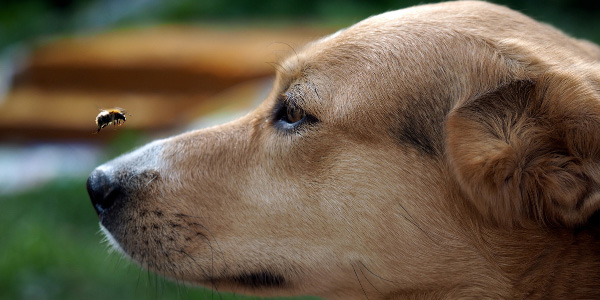 Dogs typically don’t like to mind their own business and love to stick their noses into things. They get great pleasure in chasing after things as well.
Dogs typically don’t like to mind their own business and love to stick their noses into things. They get great pleasure in chasing after things as well.